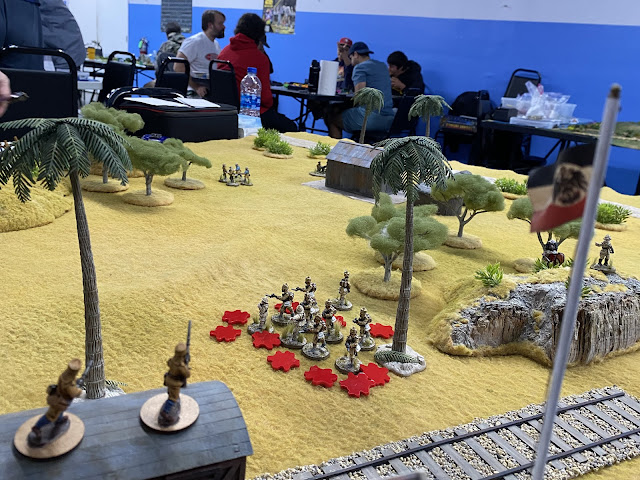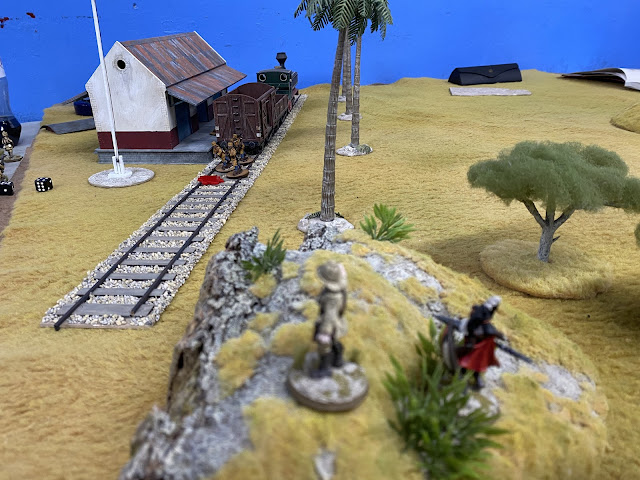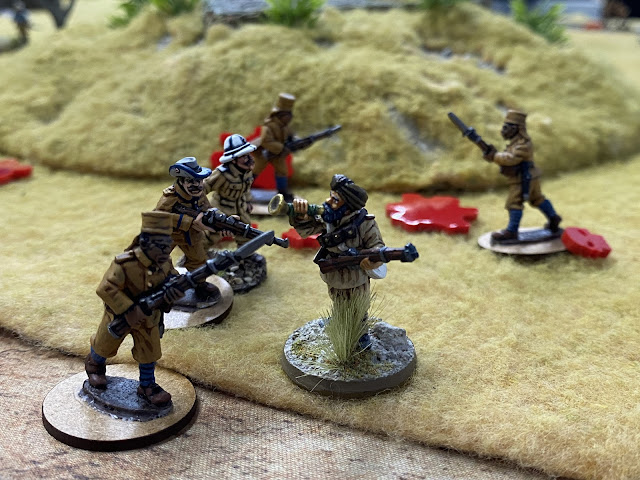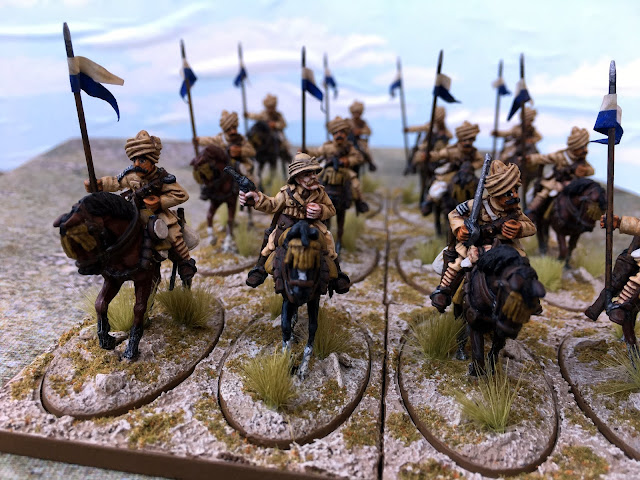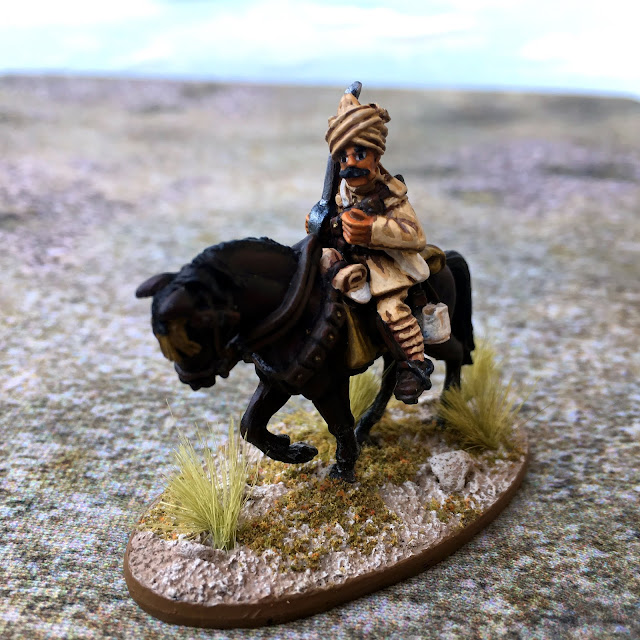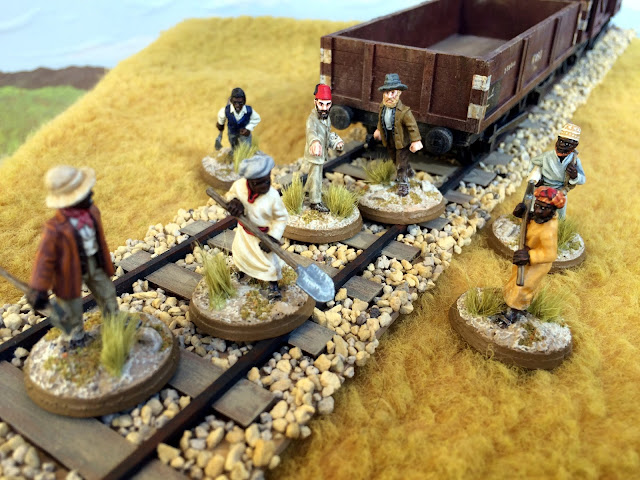My WW1 African armies haven't seen the table in a while for lack of opponents, but last week my friend Steve passed through town and brought his Germans for a quick game at the local shop. We decided to try out the 3rd Ed of the Setting the East Ablaze rules and used a scenario from the Skirmish Elite: Tanga 1914 book.
For this battle, my forces (British) needed to cross the table in the allotted time on their way into Tanga, while Steve's Germans were tasked with laying in ambush and slowing my advance. Each side got a set of prescribed units and one generated at random. We didn't have any bees to add to the battle, but included a roaming rhino for a bit of potential chaos.
The British began their trek at a ditch (I didn't have one in my terrain collection, so we used some sections of road as a substitute) which ran along their entry point on the table.
The Indians on the left flank, along with the company commander and his Masai runner, managed to make steady progress from the outset.
However, the right flank bogged down when the rhino wandered into the area.
The machine gun team also ran into trouble trying to get the gun out of the ditch. While they struggled, the platoon headquarters moved up to begin scanning the environment for hidden German askaris.
The left flank managed to dash across the open grassland unharmed and into the relative safety of a tree line.
On the right, troops still had to wait a bit longer for the rhino, but it eventually wandered off the battlefield.
The machine gun team also managed to extract themselves from the ditch and the British as a whole were finally moving at a reasonable rate.
The British platoon headquarters managed to spot a squad of askari waiting in ambush on a hilltop. The Indian troops on the right flank took cover behind another hill and began maneuvering into position for an attack.
On the left flank, the company commander climbed a hill and scanned the freight depot for signs of life, but all seemed quiet. Perhaps too quiet.
With the mission clock ticking, the Indians on the left flank took the risk of charging across the open grass in hopes of quickly reaching the depot. Unfortunately, the company commander had missed the ambushing party of German askari.
The askari were crack shots, killing the majority of the British squad outright, with the few survivors fleeing for their lives.
The platoon headquarters took cover in the tree line and began exchanging fire with the askari on the hill, while the Indians prepared for their assault.
The machine gun team also finally made it to a useful position and began setting up behind the trading outpost.
The gunfight between the askari and British continued, with the British platoon headquarters losing one man.
The Germans sent out askari from the freight depot in hopes of capturing the company commander. Not one to fear a fight, he stood his ground and managed to pick off one of the advancing askari.
On the right, the Indians began their assault on the hill, but another group of askari sprung from ambush and countercharged.
The resulting melee was bloody for both sides.
The Indian machine gun finally entered the battle and attempted to provide cover to the company commander, but only succeeded in killing one additional askari.
The Indians fought valiantly, but eventually there was but one brave survivor left. He sounded his bugle in defiance and then nothing more was heard from him.
With that, there were not enough British to complete the advance and the few survivors were forced to retreat. So a very historically accurate outcome.
We both had a lot of fun getting back to this theater and are hoping to fight another battle from this scenario book when Steve next passes through town.










